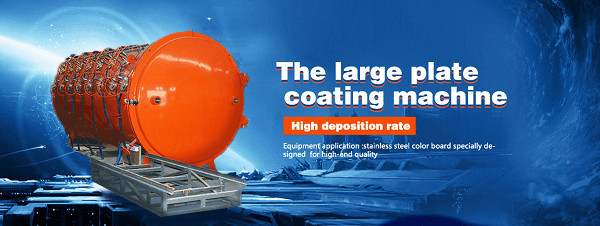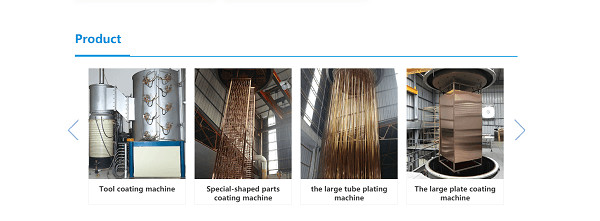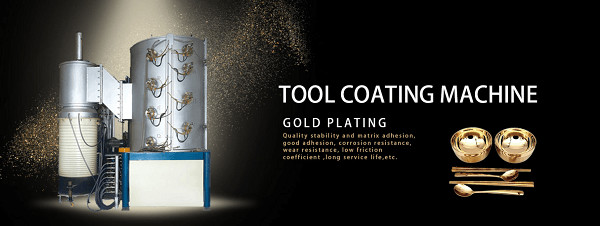Principle of electroplating (electroplating reaction, metal electrowinning process, electrode and reaction mechanism, factors affecting plating qualit
What is electroplating? In simple terms, electroplating refers to electrolysis in a solution of an electroplating machine by means of an external current to deposit another coating on the surface of an electrical conductor such as a metal. According to the function of the coating, it can be divided into protective plating, decorative plating and other functional plating.
plating work status
plating reaction:
Chemical reaction: When a certain potential is applied between the anode and the cathode, the following reaction occurs at the cathode: metal ions Mn+ diffused from the inside of the plating solution to the interface between the electrode and the plating solution, n electrons are obtained from the cathode, and reduced to metal M. On the other hand, a reaction opposite to the cathode occurs at the anode, that is, dissolution of the metal M occurs at the anode interface, and n electron-forming metal ions M n+ are released.
Faraday's law: Fara's first law: the weight of the substance deposited (or dissolved) on the electrode is proportional to the charge passed through the electrolysis reaction, ie: m = kQ = kIt (m is the mass of the precipitated or dissolved substance on the electrode; Q is When passing the charge; K is the proportional constant; I is the current; t is the energization time. Faraday's second law: in the different electrolytes, when the same amount of charge is passed, the substance that precipitates (or dissolves) on the electrode The amounts are equal, and the amount of charge required to precipitate (or dissolve) 1 mol of any substance is 9.65 X 104 C. This constant is called the Faraday constant and is represented by F. K = M / F.
When the current passes through the plating solution, the electrolyte solution undergoes an electrolytic reaction, and the metal is continuously deposited on the cathode to continuously dissolve the anode metal. Therefore, the amount of precipitation (or dissolution) of the metal must be related to the charge that passes through. Based on a large number of experimental results, Faraday established the law of the relationship between the precipitated (or dissolved) substance and the charge.
Dispersion ability of plating solution:
The dispersing ability of the plating solution refers to the ability of the plating solution to uniformly distribute the thickness of the metal layer, which is also called the throwing ability. The better the dispersing ability of the plating solution, the more uniform the thickness of the metal layer deposited at different cathode sites.
vacuum coating machine,pvd coating machine,pvd vacuum machine,vacuum ion coating machine,multi-arc ion coating machine
Coating solution coverage:
Another concept commonly used in electroplating production is the covering ability, also known as deep plating capability, which refers to the ability of the plating solution to deposit a metal coating on the deep recess of the plated part. The dispersing ability and the covering ability are different. The former is to explain the uniformity of the distribution of the metal on the cathode surface. The premise is that there is a coating on the surface of the cathode; the latter refers to the problem that the metal has a deposited layer in the deep recess of the cathode surface.
Current efficiency:
At the time of electroplating, there is more than one reaction on the electrode, and the mass of the substance actually deposited on the cathode is not equal to the calculation result obtained according to Faraday's law, and the actual value is always smaller than the calculated value.
Metal's electrowinning process:
1. The electroplating process is a process in which metal ions in a plating solution are reduced by a reaction of an electric field into metal atoms by an external electric field and metal deposition is performed on the cathode. The following three steps must be completed to complete the electrodeposition process:
1.1. Liquid Mass Transfer: The hydrated metal ions or complex ions in the plating solution migrate from the inside of the solution to the polar interface to the side of the double layer solution of the cathode.
1.2. Electrochemical reaction: The hydrated metal ion or complex ion passes through the electric double layer, and the hydration molecule or ligand layer around it is removed, and electrons are generated from the cathode to form a metal atom. There are three ways: electromigration convection and diffusion.
vacuum coating machine,pvd coating machine,pvd vacuum machine,vacuum ion coating machine,multi-arc ion coating machine
1.3. Electrocrystallization: Metal atoms diffuse along the surface of the metal to the point of crystal growth, and are arranged in a metal atomic state to form a plating layer in the crystal lattice.
When electroplating, the above three steps are performed simultaneously, but the speed is different, and the slowest one is called the control part of the whole deposition process. Different steps are used as control points, and the final electrodeposition results are different.
#electrode and reaction mechanism:
A. Electrode potential
When the metal electrode is immersed in the solution containing the metal ion, there is a balance that the metal is deelectronized and the reaction dissolved in the solution and the reverse reaction of the metal ion to precipitate the metal should exist simultaneously:
Mn++ne M #
The equilibrium potential is related to the nature of the metal and the temperature and concentration of the solution. In order to accurately compare the influence of the nature of the substance on the equilibrium potential, it is stipulated that when the solution temperature is 250 C and the concentration of the metal ion is 1 mol/L, the measured potential is called the standard electrode potential. Metals with a large negative electrode potential are prone to loss of electrons, while metals with a large positive electrode potential are susceptible to electron reduction.
B. Polarization
vacuum coating machine,pvd coating machine,pvd vacuum machine,vacuum ion coating machine,multi-arc ion coating machine
Polarization refers to the phenomenon that the potential of the electrode deviates from the potential of the balanced electrode when a current passes through the electrode. Therefore, the current-potential curve is called a polarization curve. The main reasons for the polarization are electrochemical polarization and concentration polarization.
(1) Electrochemical polarization
Since the electrochemical reaction speed on the cathode is smaller than the speed at which the external power source supplies electrons, the polarization of the electrode potential is shifted in the negative direction.
(2) Concentration polarization
The polarization due to the difference between the concentration of the surface layer of the adjacent electrode and the concentration of the solution body is called polarization polarization, which is caused by the ion diffusion speed in the solution being smaller than the electron motion.
Factors affecting plating quality:
1. Effect of pH
The pH in the bath can affect the discharge potential of hydrogen, the precipitation of alkaline inclusions, and the composition of the complex or hydrate and the degree of adsorption of the additive. However, the extent of the impact on various factors is generally unpredictable. The optimum pH is often determined by experimentation. In baths containing complexing agent ions, the pH may affect the balance of the various complexes present and must be considered in terms of concentration. In the electroplating process, if the pH value is increased, the cathode efficiency is higher than the anode efficiency, and the pH value is decreased. The pH can be stabilized to a certain extent by the addition of a buffer.
vacuum coating machine,pvd coating machine,pvd vacuum machine,vacuum ion coating machine,multi-arc ion coating machine
2. Effect of additives
Brighteners, levelers, wetting agents and other additives in the plating solution can significantly improve the coating structure. There are inorganic and organic components for this additive. The reason why inorganic additives work is because they form a highly dispersed hydroxide or sulfide colloid in the electrolyte, and adsorption on the surface of the cathode hinders metal precipitation and enhances cathodic polarization. The reason why organic additives work is that such additives are mostly surface active substances, which adsorb on the surface of the cathode to form a film, which hinders metal precipitation, thereby improving cathode polarization. In addition, some organic additives form a colloid in the electrolyte, which will complex with metal ions to form a colloid-metal ion type complex, which hinders the discharge of metal ions and enhances the cathodic polarization.
3. Influence of current density
Any plating must have a current density range that produces a normal coating. When the current density is too low, the cathodic polarization is small, the plated orange is coarse, and there is even no plating. As the current density increases, the cathode polarization increases and the coating grains become finer. When the current density is too high and exceeds the limiting current density, the quality of the coating begins to deteriorate, and even sponges, dendrites, scorch and blackening appear. The upper and lower limits of the change in current density are determined by factors such as the nature of the plating solution, concentration, temperature, and agitation. In general, a larger current density can be tolerated with an increase in the concentration of the main salt, an increase in the temperature of the coating, and agitation.
4. Influence of current waveform
The effect of the current waveform is to influence the cathode deposition process by changes in cathode potential and current density, which in turn affects the microstructure and even composition of the coating, resulting in changes in coating performance and appearance. Practice has proved that three-phase full-wave rectification and regulated DC are equivalent, and have little effect on the coating structure, while other waveforms have a greater impact.
5. Effect of temperature
The increase in the temperature of the plating solution can accelerate the diffusion and reduce the concentration polarization. In addition, the temperature rise can also accelerate the dehydration process of the ions. The increased surface activity of the ions and cathodes also reduces electrochemical polarization, resulting in coarser crystals. On the other hand, an increase in temperature increases the solubility of the salt, thereby increasing the conductivity and dispersibility; it also increases the upper limit of the current density, thereby increasing production efficiency.
6. Effect of mixing
Stirring reduces cathode polarization, thickens the grain, but increases current density, thereby increasing productivity. In addition, the agitation can also enhance the effect of the leveling agent.





